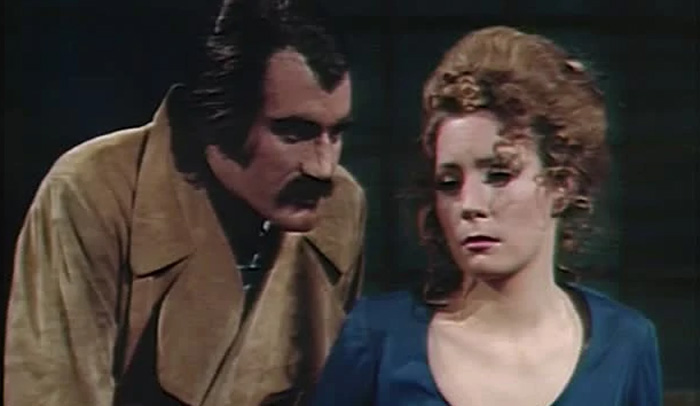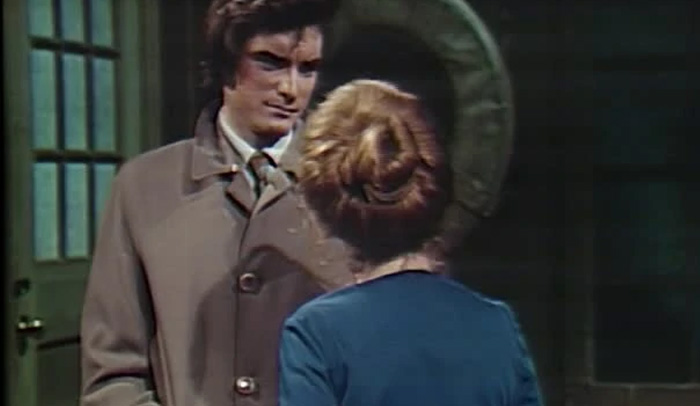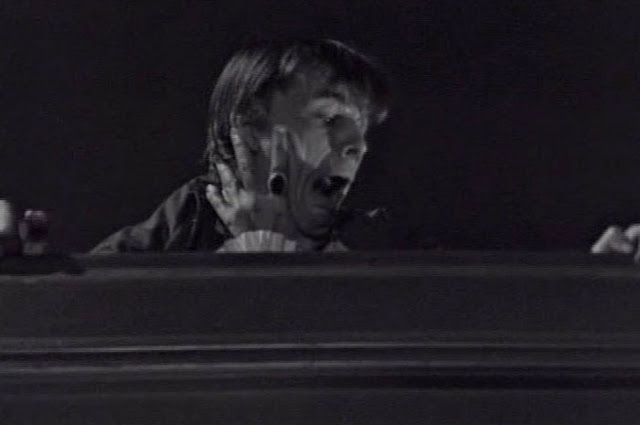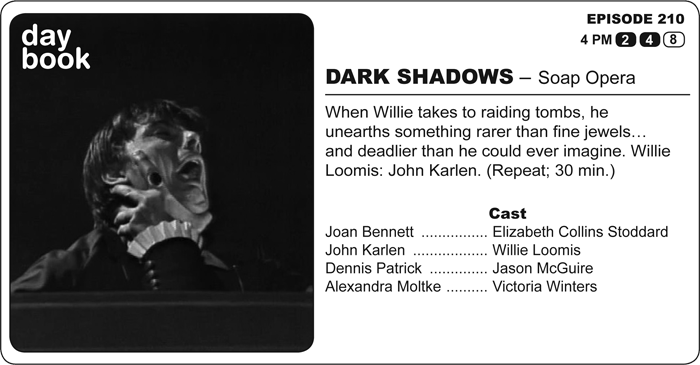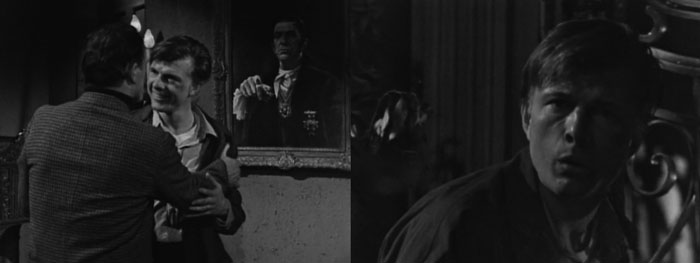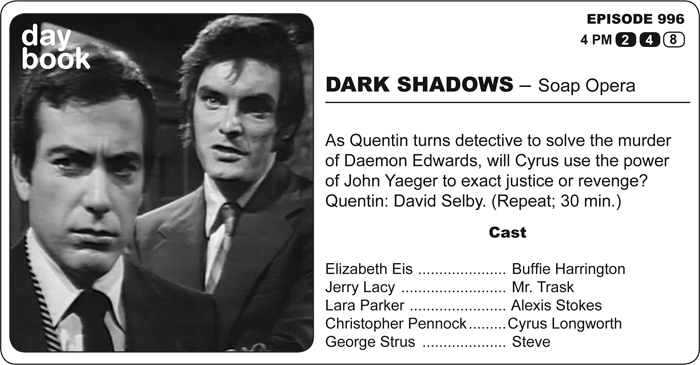By PATRICK McCRAY
Taped on this day in 1970: Episode 996
What has black hair, a bushy mustache, and swings a mean sword cane? Parallel Time, meet your new best friend. John Yaeger: Chris Pennock. (Repeat; 30 min.)
Cyrus transforms into the giddy, roughhousing swinger, John Yaeger, who immediately goes to the Eagle to romance Buffie. In the process, he deals with his romantic rival, Steve, with extreme prejudice. When he offers to pay for the damage with one of Longworth’s checks, Buffie drops a dime on him to Quentin. Yaeger is well aware of the betrayal, however.
April 13 is a significant day for me because it’s not only the day they taped episode 210, where the iconic hand of Barnabas Collins shot up to grab the 20th century by the throat, it was also one year before I was born. But by that time, 1971, Dark Shadows had been off the air for eleven days.
I was eleven when I saw Dark Shadows for the first time. That was in January of 1982. It was very much of a different world from 1967 or 1970, betrayed by hairstyles and hemlines, and yet, as adults are cursed to do, I will tell you what you may know better than I; eleven years is nothing. The show had only been off the air for eleven years. Eleven years ago from tonight, Barack Obama was president. We had iPhones. Marvel movies were coming out… one, anyway. Daniel Craig was still James Bond. It doesn’t seem that long ago. And 996 features a performance and an interpretation of a classic character that are both shockingly modern. Ahead of 1970. Of 1982. And maybe of 2020.
April 13. I can think of few better ways to spend this day than with Chris Pennock. With episode 996, we do. And how.
It’s the first time we see John Yaeger flex his muscles in the fullest sense. From the get-go, although the makeup is more Goulet than ghoul, this is no ordinary performance. How much was Joe Caldwell? How much was Chris Pennock? Inseparable?
Dark Shadows has a rich history of improving the classics, thank you very much, as they reinterpreted venerable texts for a postmodern era. The original authors -- Shelley, Stoker, Wilde, James, Stevenson, etc -- certainly had the edges and luxuries of poetic language and originality. But with the edge of originality also comes the myopia of having to do this now-now-now, with no time to let decades and culture mull over the ideas in context. Essentially, those original authors were beta testing their ideas. The James Whales, Jimmy Sangsters, and Dan Curtises (Curti?) were perfecting them for wide release to the public.
Good. Evil. So clear for Victorians and Edwardians whose sun never sat, whose racial superiority was axiomatic, and who didn’t have the troubled teendom that was the 20th century yet under their belts. The Jekyll and Hyde concept is now, post-Freud & Company, just… weird. Richard Matheson fired the first shot with The Enemy Within, wherein both the “good” and “evil” sides had as much to recommend them as to condemn. Pennock and Caldwell take this even further, giving Dark Shadows its most philosophical (and dramatically ebullient) moment, sadly stuck in a storyline that is, you know, babysitting the audience because we got a movie to make, people. Look alive!
Maybe that was a good thing. Maybe they couldn’t have gotten away with this if Uncle Dan were at home. (Or if Drug Culture had not yet been totally villainized, and someone tell Cary Grant to give us his source.) When we meet John Yaeger, he might not be what we think of as conventionally attractive, but he’s also not the semi-simian grotesque that March, Cagney, and the other guys became. The early Hydes were childlike. Yaeger is a cocky young man in full. You know when women tell you (well, tell me) not to be too nice, what they’re really saying is not to be too reliant on their validation. John Yaeger is an army of self-validation. No self-doubt. It’s not that the opinions of others don’t matter, but they don’t seem to matter more to him than his own.
Okay, yes, he beats Steve mercilessly, but Steve is no prize and his grabby way with the biscuit hooks, re: Elizabeth Eis, would not exactly fly in under the flag of #MeToo Uber Alles. This is redneck-on-redneck action, and I say let the boys duke it out, which is actually my way of saying that Yaeger was not unprovoked. When he comes to life, it is with as much joy as malice. He is the continuum of human reaction, and say what you will, he’s honest. As I’ve noted before, it’s hard to tell what Yaeger would be like if things went his way. I imagine a pretty fun guy. Similarly, if he sensed true loyalty, he’d probably be the kind of dogged advocate everyone wants in a friend.
The problem with Yaeger is not that he’s too much of anything. The problem is that everyone else is too little. If everyone took a dose of Longworth No.5, he’d be on a level playing field. I’m not so sure he’d go nuts at that point because, well, as Robert Heinlein imagined, (in some cases) an armed society is a polite society. Until then, while there are few actions of his that we can reasonably commend, we can still get a giggle or more from the spirit. As for the execution? Again, perhaps this is only a performance that you can get away with when the boss is in Tarrytown. If there’s anyone whose emphatic sense of conflict relations might meet its match with John Yaeger, it’s Dan Curtis. Am I the only one who sees this?

